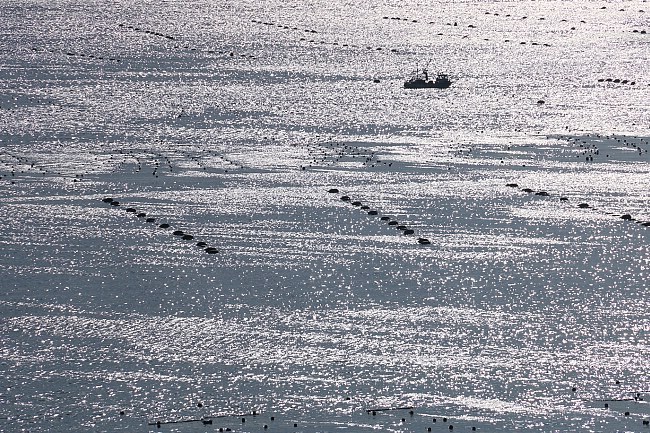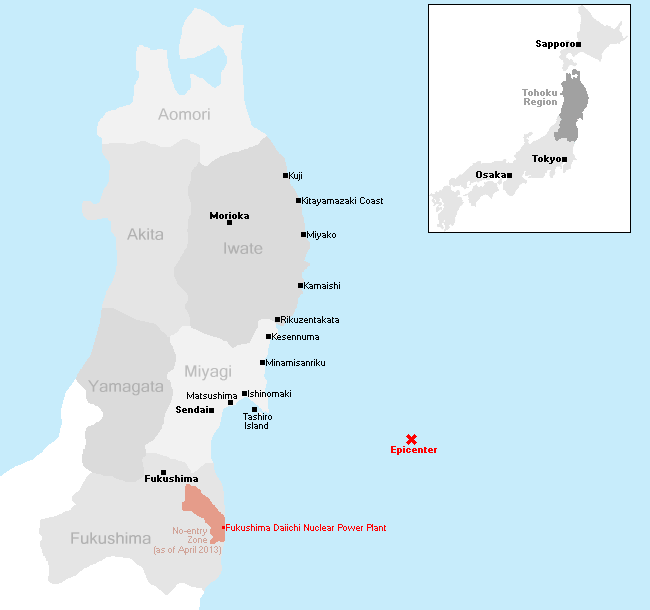Three years after the tsunami

This is the seventh part (see also parts one, two, three, four, five and six) of an open ended series to document the recovery of the tsunami hit coast of northeastern Japan where nearly 20,000 people lost their lives, and entire towns were destroyed in the afternoon of March 11, 2011. Three years after the tsunami, we revisited some of the worst hit cities along the Sanriku Coast in Miyagi and Iwate Prefectures on April 18-19, 2014.

The focus of efforts along the Sanriku Coast have now definitely shifted from the clean-up to the reconstruction phase, and the recovery progress is becoming more and more obvious after many visits that showed little visible change. The first phase of actual reconstruction can finally be seen on a large scale along the coast: the waterfront is refortified, port facilities are restored, farmland is recovered, the surface level of city districts is raised and elevated plains are carved into the hills to create new residential space. New, permanent commercial, industrial and residential buildings are being constructed in growing numbers.




The Sanriku Railway was fully reopened along its entire length on April 6, while the rapid bus service further south along the coast is operating increasingly on its own dedicated roads, the former tracks of the JR Kesennuma and Ofunato Lines. Furthermore, work on the extension of the Sanriku Expressway is underway. Tourist facilities keep on being repaired (and sometimes improved beyond their original states). Meanwhile, debates are ongoing on whether to demolish some of the few remaining ruins or preserve them for the eduction of future generations of both locals and visitors.


This time we followed the coast from north to south, starting at the port city of Miyako in Iwate Prefecture. We stayed at the pine tree surrounded Jodogahama Park Hotel at Jodogahama Beach. The tourist facilities around the tsunami hit tourist spot have been further improved since our previous visit half a year ago, and beautification efforts are continuing. Within a year, this wonderful tourist spot will be in better shape than ever before.

Compare: April 2014 - April 2013 - April 2012 - April 2011






Forty kilometers further south along the coast we visited the coastal town of Kamaishi whose industrial history is part of Japan's upcoming candidate for World Heritage status, "Sites of Japan's Meiji Industrial Revolution", to be decided in summer 2015. We climbed the nearly 50 meter tall Kamaishi Daikannon statue just outside of the city center. This statue of Kannon is unique for holding a fish in her hands, protecting seafarers and fishermen.



Compare: April 2014 - October 2013 - April 2011
The progress in Rikuzentakata was particularly striking. The city built a giant, three kilometer long conveyor belt system for transporting the huge amounts of soil from nearby hills into the city that are necessary for the construction of the large seawall and the increase of elevation of the city. Nicknamed "The Bridge of Hope", the conveyor belt is expected to increase the speed of reconstruction and is reducing the number of dump truck round trips into the city by several thousand per day.

Compare: April 2014 - April 2013 - April 2012





Compare: April 2014 - April 2013 - April 2012 - April 2011
A twenty minute car ride further south the coast across the prefectural border in Miyagi Prefecture, we visited Kesennuma City. The stranded "Kyotoku Maru 18" ship, the most striking monument of the March 2011 disaster, has now completely disappeared from the city's Shishiori district. As a result, visitors to the city and its recovery markets have decreased considerably, and Kesennuma now lacks a major monument for remembering the disaster and educating future generations.

Compare: April 2014 - April 2013 - April 2012 - April 2011



The appearance of the former city center of Minamisanriku has also experienced some major change for the first time in a long time, as large amounts of soil are brought in to raise its level by several meters. Visitors to the city's popular Sansan recovery market are now greeted by a new Moai statue, presented by the government of Chile, after the former statue was damaged in the 2011 tsunami. The special friendship between Chile and Minamisanriku started after a powerful 1960 earthquake in Chile triggered a tsunami that killed over a hundred people in Japan, and Minamisanriku was particularly badly hit.

Compare: April 2014 - April 2013 - April 2012 - April 2011

Compare: April 2014 - April 2013 - April 2012 - April 2011

Compare: April 2014 - April 2013 - April 2012 - April 2011



The view from Hiyoriyama Park in Ishinomaki did not change much since our previous visit. The cherry trees around the park were at full bloom, and people were starting to set up picnic spots for hanami gatherings later in the day. Evening illuminations at the park remained cancelled, though. Outside of the city center, the San Juan Bautista Museum was finally re-opened after damage to the building. The museum exhibits a replica of a ship used by the local feudal lord in the early 1600s to visit Europe.

Compare: April 2014 - April 2013 - April 2012 - April 2011

Compare: April 2014 - April 2013 - April 2012 - April 2011


Compare: April 2014 - April 2013 - April 2012 - April 2011







































